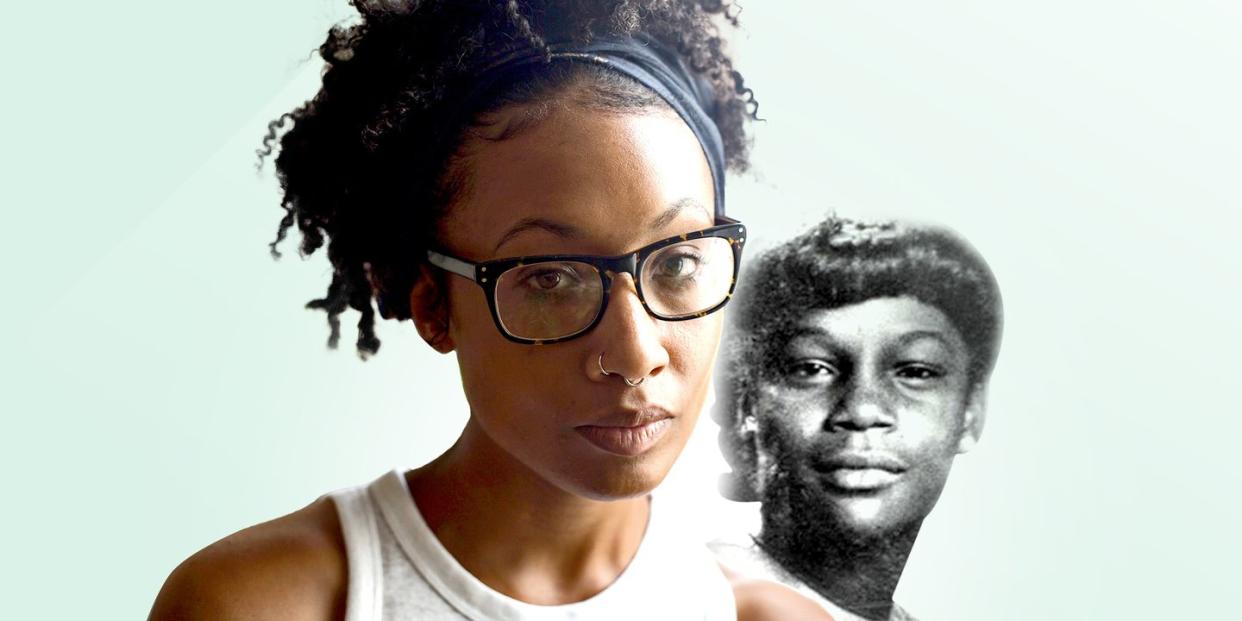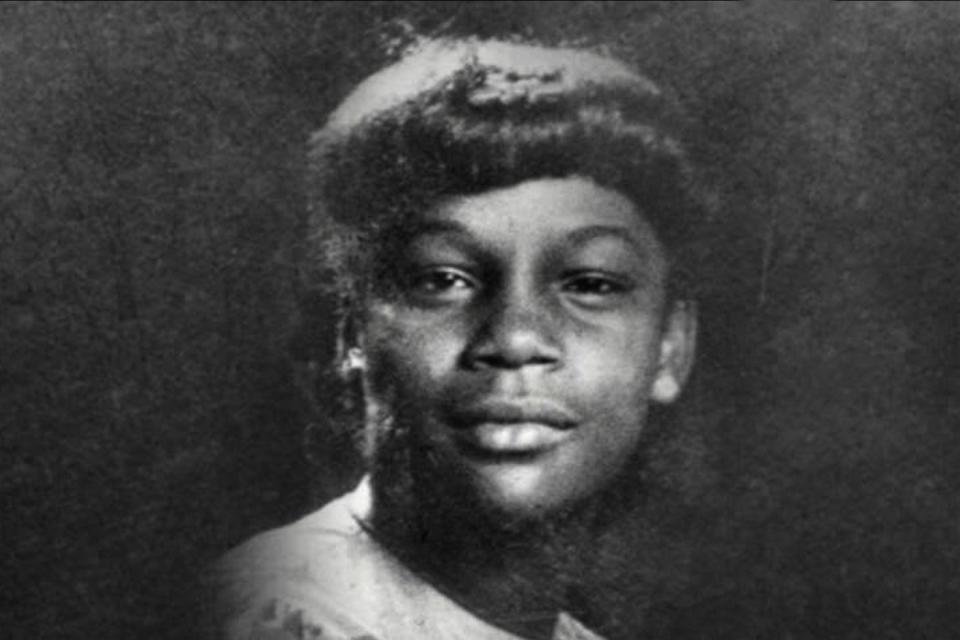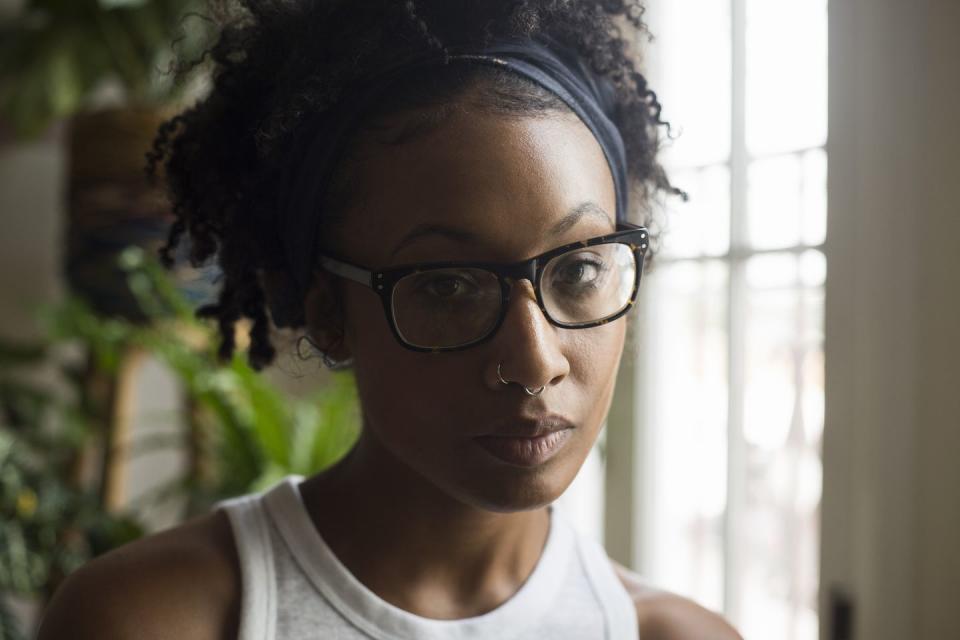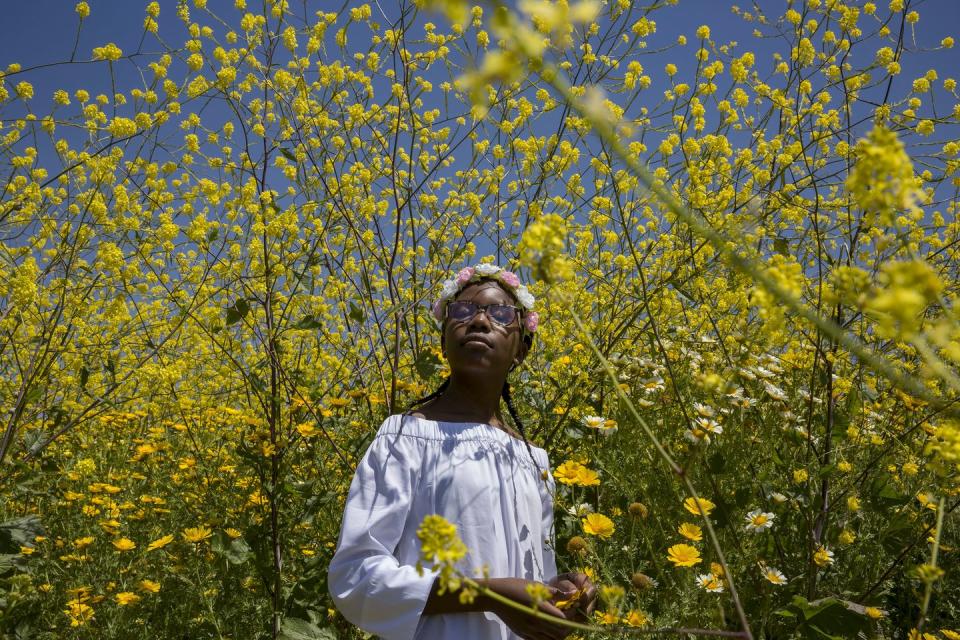Latasha Harlins' Death Fueled the 1991 LA Riots. A New Documentary Celebrates Her Life.

Any 1990s news viewer is familiar with the footage of Rodney King being kicked and beaten with batons by four members of the LAPD—it’s been seared into the American consciousness. But that attack wasn’t the only filmed assault that sparked L.A.’s 1992 riots. Just thirteen days after Rodney was beaten, a fifteen-year-old Black girl named Latasha Harlins entered the Empire Liquor Market in South Central Los Angeles. Within view of the store’s security cameras, she was shot in the back of the head by the store owner after a dispute over a bottle of orange juice.
In Sophia Nahli Allison’s new short documentary about the girl’s life, A Love Song for Latasha, the footage from the liquor store isn’t featured. Instead of focusing on the circumstances of the teenager’s death through the shorthand often deployed in recounting her story—the orange juice, the video tape—the experimental short, which debuts on Netflix Monday, celebrates her life as told by the women who loved her. If you’ve seen anything of Latasha’s life, it’s likely the final seconds of her existence. Allison instead creates a brief, stirring portrait of the fifteen years that preceded them.
The best-known fact about Harlins, whose friends and family called her Tasha, is that she was killed over a $1.79 bottle of juice. Witnesses testified that once inside the store, Latasha put the bottle of juice in her backpack and then approached the counter, money in hand, to pay for her purchase. Police would also determine that she hadn’t tried to steal the drink. But Soon Ja Du, the store owner, accused her of shoplifting. She reached across the counter to grab the teen, who in turn punched Du. The shopkeeper threw a stool at Latasha, who threw the orange juice on the counter before turning to leave. Then Du picked up a handgun and shot Harlins in the back of the head.
Allison was barely preschool aged at the time of Latasha’s death, but though she grew up in South-Central Los Angeles, she knew only of Rodney King as the face of the city’s riots. “When I was finally in my late twenties and learning about Latasha, I was completely shocked that I’d never heard about her,” the filmmaker told Esquire. “So I wanted to rebuild this history and this archive for Latasha, because there are a lot of L.A. natives that still don’t really know who she is.”

The filmmaker deploys experimental reenactments to re-create the memories of two of the women closest to Latasha, her best friend Tybie O’Bard and her cousin Shinese Harlins. Allison, who studied photojournalism before becoming a filmmaker, renders the young girls who stand in for Latasha and her playmates with the natural but studied eye of a street photographer. O’Bard and Harlins speak of the struggles Latasha went through—her mother was murdered when she was just nine years old—but they also dwell on the mundane sweetness of her young life, including trips to the pool and the basketball courts, and playing “Stand by Me” on a jukebox at a local burger joint. Latasha wanted to be a lawyer, but she also wanted to own her own businesses, because she was already familiar with being harassed in stores just because she was a young Black person.
The film’s title is taken from a conversation with Latasha’s uncle, the ex-husband of her late aunt Denise Harlins, who became an activist in the wake of her niece’s murder. “We were just talking to him about Latasha and about the other projects that have mentioned her, and he told us this has to be a love song for her,” said Allison. “She deserves this intimacy.”
Although its focus is on humanizing its subject by concentrating on her life, the film does deal with Latasha’s death, as experienced by her friends and family, in deeply moving interviews. Until she saw footage of her best friend being shot to death on the news, O’Bard “never knew what terror was,” she says in the film.

Allison says that those who best loved the teenager have been “disappointed” in the way Latasha’s death has been covered, so she made sure to include them throughout the filmmaking process. “I’d always been taught, ‘Never share what you’re working on if it’s a documentary,’ ” she says. But the inherent power imbalance between documentarian and subject made her decide to include the family in the process, in order to “decolonize” the documentary practice. Given the emotional content of the film, she also didn’t want to retraumatize her subjects.
“What happens when you don’t show people the footage and the first time they see it is when they’re in the audience?” she says. “I wanted them to always know what was going to happen in the film, to be prepared for seeing themselves crying.”
Du was convicted of voluntary manslaughter and could have faced up to sixteen years in prison for killing Harlins. Instead, Judge Joyce A. Karlin sentenced her to five years probation, 400 hours of community service, and a $500 fine, saying that the conclusion of the trial “should be a time for healing.”

An appeals court voted to uphold the sentence just a week before the acquittal of the policemen who beat King set off the 1992 riots. The story also highlighted the fact that racism in America isn’t only a Black-white affair, and inflamed tensions between Black and Korean Americans in L.A. At the bail hearing, more than 150 members of the local Korean American community attended to support Du, and applauded when she was released on bail. During the riots, hundreds of Korean American–owned businesses were destroyed.
Latasha has been memorialized before, including in songs by artists like Tupac Shakur. When Allison returned to her hometown twenty-five years after the riots, she decided to embark on a project dedicated to Latasha’s memory. “Latasha’s best friend would always tell me, ‘Latasha’s going to make you work for this.’ And that’s something that I really believe,” she said. “We had to put in the time, the dedication, and the work to let this exist fully, because too often her story was just reduced down to these last moments of her life.”
You Might Also Like


